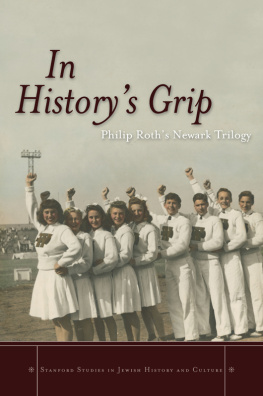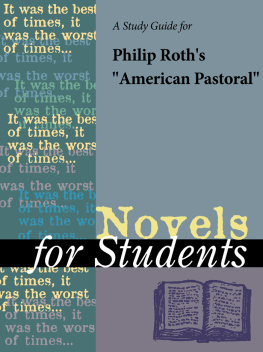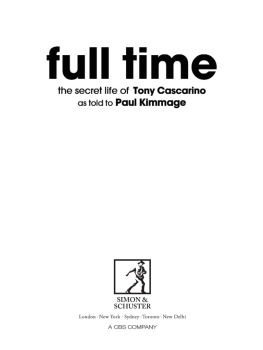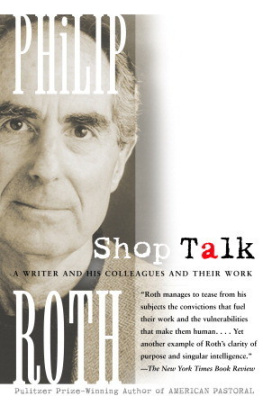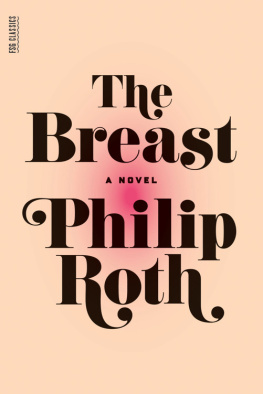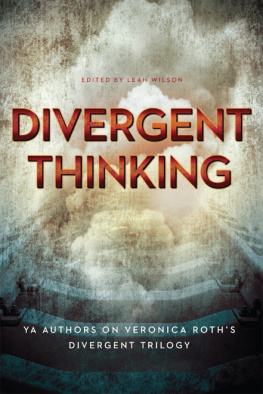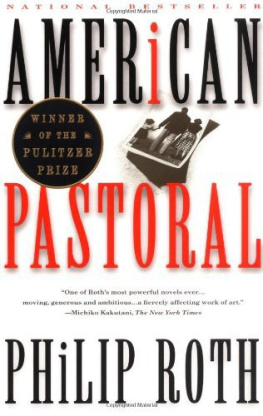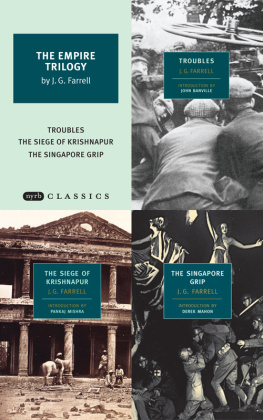Kimmage Michael - In historys grip: Philip Roths Newark trilogy
Here you can read online Kimmage Michael - In historys grip: Philip Roths Newark trilogy full text of the book (entire story) in english for free. Download pdf and epub, get meaning, cover and reviews about this ebook. City: Stanford;California, year: 2012, publisher: Stanford University Press, genre: Art. Description of the work, (preface) as well as reviews are available. Best literature library LitArk.com created for fans of good reading and offers a wide selection of genres:
Romance novel
Science fiction
Adventure
Detective
Science
History
Home and family
Prose
Art
Politics
Computer
Non-fiction
Religion
Business
Children
Humor
Choose a favorite category and find really read worthwhile books. Enjoy immersion in the world of imagination, feel the emotions of the characters or learn something new for yourself, make an fascinating discovery.
- Book:In historys grip: Philip Roths Newark trilogy
- Author:
- Publisher:Stanford University Press
- Genre:
- Year:2012
- City:Stanford;California
- Rating:3 / 5
- Favourites:Add to favourites
- Your mark:
- 60
- 1
- 2
- 3
- 4
- 5
In historys grip: Philip Roths Newark trilogy: summary, description and annotation
We offer to read an annotation, description, summary or preface (depends on what the author of the book "In historys grip: Philip Roths Newark trilogy" wrote himself). If you haven't found the necessary information about the book — write in the comments, we will try to find it.
In historys grip: Philip Roths Newark trilogy — read online for free the complete book (whole text) full work
Below is the text of the book, divided by pages. System saving the place of the last page read, allows you to conveniently read the book "In historys grip: Philip Roths Newark trilogy" online for free, without having to search again every time where you left off. Put a bookmark, and you can go to the page where you finished reading at any time.
Font size:
Interval:
Bookmark:
STANFORD STUDIES IN JEWISH HISTORY AND CULTURE
EDITED BY Aron Rodrigue and Steven J. Zipperstein
In Historys Grip
Philip Roths Newark Trilogy
Michael Kimmage
STANFORD UNIVERSITY PRESS
STANFORD, CALIFORNIA
Stanford University Press
Stanford, California
2012 by the Board of Trustees of the Leland Stanford Junior University.
All rights reserved.
This book has been published with the assistance of the School of Arts and Sciences and the Office of the Dean of Graduate Studies at the Catholic University of America as well as with the assistance of the Ludwig-Maximilian Universitys Center for Advanced Studies.
No part of this book may be reproduced or transmitted in any form or by any means, electronic or mechanical, including photocopying and recording, or in any information storage or retrieval system without the prior written permission of Stanford University Press.
Printed in the United States of America on acid-free, archival-quality paper
Library of Congress Cataloging-in-Publication Data
Kimmage, Michael, author.
In historys grip : Philip Roths Newark trilogy / Michael Kimmage.
pages cm. (Stanford studies in Jewish history and culture)
Includes bibliographical references and index.
ISBN 978-0-8047-8182-4 (cloth : alk. paper)
ISBN 978-0-8047-8367-5 (e-book)
1. Roth, PhilipCriticism and interpretation. 2. American fiction20th centuryHistory and criticism. 3. Newark (N.J.)In literature. 4. History in literature. 5. Jews in literature. I. Title. II. Series: Stanford studies in Jewish history and culture.
PS3568.O855Z696 2012
813.54dc23
2012004362
Typeset by Bruce Lundquist in 10.5/14 Galliard
to Alma
knower, teller, lover of stories
As Ill explain later, the books I read in Lubyanka made one of the greatest experiences of my life. Not because they allowed me an escape but because, to a certain extent, they transformed me and shaped me greatly. It was the way I read those books; I came at them from a completely new angle. And from then on I had a completely new understanding, not only of literature, but of everything.
Literature is insight and synthesis, which means that poetry, ultimately, is heroic. Naked, weak, hungry, trembling, endangered by all the elements, all the beasts and demons, the cave men performed that act of heroism for consolation, in the deepest sense of the word. And at that time there in Lubyanka this seemed to me the essence of literature and the source of its legitimacy in the world. Consolation for a weak, naked cave man.
Aleksander Wat,
My Century: The Odyssey of a Polish Intellectual
Contents
Acknowledgments
Without a book in mind, I began thinking about the triangle of Roth, Newark, and history in the fall of 2005. This was at the Amerika Institut of the Ludwig-Maximilian University (LMU) in Munich. Over the past seven years my LMU colleagues, old and new, have contributed immeasurably to my life in scholarship: Klaus Benesch, Michael Hochgeschwender, Ariane Leendertz, Charlotte Lerg, Karl Murr, Anke Ortlepp, Berndt Ostendorf, Sascha Phlmann, Ursula Prutsch, Maren Roth, and Britta Waldschmidt-Nelson. Christof Mauch, another historian with a soft spot for literature, encouraged this project in many, many ways. The Humboldt Foundation has been consistently generous in building up my ties to German academia. Over many months the LMUs Center for Advanced Studies (CAS) provided ideal working conditions, among other things, giving time and inspiration as I wrote this book. There, in addition to CASs extraordinary staff, I would like to single out Annette Meyer and Sonja Asal, an avid Roth reader, for thanks.
I have another set of colleagues across the Atlantic. At Catholic University, I have never been made to feel that writing about literature is a deviation from the serious study of history, and the university has lent expansive support to this book. Dean Larry Poos furnished financial assistance, cheerfully administered by Peter Gribbin. Dean James Greene was also instrumental in offering his financial help. Jerry Muller, a wonderful colleague and interlocutor, is erudite in matters Rothian. Tom Cohen, similarly erudite, went through my manuscript with a fine-tooth comb, to its immense benefit. My other history department colleagues create a scholarly environment from which we all profit. Ernie Suarez is a friend and literary friend across campus. I am indebted to the students in our graduate seminar on Jews and Southerners for their illuminating discussion of Portnoys Complaint.
I have many other friends to thank for good and relevant conversation in the course of my work: Casey Blake, George Cotkin, Paul Jaskunas, Gary Shteyngart, Nancy Sinkoff, Abe Socher, John Stauffer, and Rajesh Vedanthan. Michael Gordin and Michael Kazin read early drafts of the manuscript, as did Ruth Wisse, a teacher and friend with whom this book is in obvious dialogue. Atina Norich provided a brilliant readers report, as precise and true as it was useful. Jeremy Dauber gave me the chance to speak on Roth to a lively audience at Columbia.
The staff of the Adam Miskiewicz library maintains an elegant working space in the Vilnius city center; I am always glad to work there, as I often did while writing this book.
While discussing this book, Neal Kozodoy made his usual wise editorial suggestions, which led me to Steve Zipperstein, who shepherded my manuscript toward publication with speed and graciousness. At Stanford University Press, Norris Pope has been exemplary in his lucidity, good humor, and professionalism. I would like to thank Sarah Crane Newman, Carolyn Brown, and the staff of Stanford University Press for their help as well. Cynthia Lindlof did a superb job of copyediting.
My parents stand tall among my best teachers of literature, with sharp eyes for the historical nuance of novels and for the ways in which history, our understanding of history, cries out for great literature. Amid pressing obligations, my mother wrote out detailed and invaluable commentary on the manuscript to this book. My wife, Alma, to whom In Historys Grip is dedicated, is one of its sponsors, and her kitchen table in Vilnius the place where most of this book was written. In her love of storytelling, she is also a part of its argument. This is a love our daughter, Ema, who played with the rough drafts of this book, will surely inherit.
Introduction
The man who decides to forge a distinct historical identity, who sets out to spring the historical lock, and who does so, brilliantly succeeds at altering his personal lot, only to be ensnared by the history he hadnt quite counted on: the history that isnt yet history, the history that the clock is now ticking off, the history proliferating as I write, accruing a minute at a time and grasped better by the future than it will ever be by us. The we that is inescapable: the present moment, the common lot, the current mood, the mind of ones country, the stranglehold of history that is ones own time. Blindsided by the terrifyingly provisional nature of everything.
Philip Roth, The Human Stain
The East Coast is the deepest repository of American history, and the city of Newark, New Jersey, is embedded in the East Coast, next to New York City, close to Philadelphia, not far from Boston and Washington, DC. Colonial history has left its sediments in New Jersey, one of the original thirteen colonies. The American Revolution and early republic were intimately connected to the New Jersey territory between Philadelphia, city of the Constitutional Convention, and New York, which was briefly the new nations capital. Newark worried its way through the War of 1812 and suffered through the Civil War. As the nation underwent the dramas of industrialization, mass immigration, and the black migration from South to North, so did Newark, an industrial city with few traces of its preindustrial past. In the late 1960s, Newarks name was added to the list of cities devastated by rioting and unrest, a small chapter in the chronicle of national discontent. On September 11, 2001, one of the four hijacked planes left from Newark airport, traveling out from New Jersey to wreak its world-historical havoc. Yet Newark is not an obviously historical place. It is too small to elicit the fascination of a major city. It is too poor to sponsor urban magnificence on par with the hubbub across the Hudson, resplendent Manhattan, there to reduce all around it to diminutive and depressing proportions. Even by the standards of Americas postindustrial declining cities, its Clevelands and its Buffaloes, Newark is a sad place, with a meager skyline and a vast expanse of crumbling buildings, streets, and neighborhoods.
Next pageFont size:
Interval:
Bookmark:
Similar books «In historys grip: Philip Roths Newark trilogy»
Look at similar books to In historys grip: Philip Roths Newark trilogy. We have selected literature similar in name and meaning in the hope of providing readers with more options to find new, interesting, not yet read works.
Discussion, reviews of the book In historys grip: Philip Roths Newark trilogy and just readers' own opinions. Leave your comments, write what you think about the work, its meaning or the main characters. Specify what exactly you liked and what you didn't like, and why you think so.

